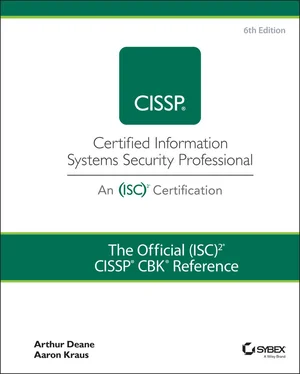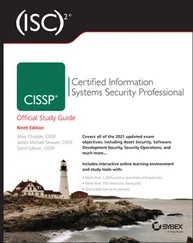SOC 2: An audit and compliance report that evaluates an organization based on AICPA's five “Trust Services principles”: privacy, security, availability, processing integrity, and confidentiality. Many organizations undergo SOC 2 auditing and present a SOC 2 report to regulators and customers to demonstrate compliance with industry standard security controls.
SOC 3: This is a “lite” version of a SOC 2 report and abstracts or removes all sensitive details. A SOC 3 report generally indicates whether an organization has demonstrated each of the five Trust Services principles without disclosing specifics (like exactly what they do or don't do). Companies make SOC 3 reports available to the public and restrict SOC 2 reports to trusted parties.
Payment Card Industry Data Security Standard
If your organization handles payment card information (i.e., credit or debit cards), you are likely required to demonstrate PCI DSS compliance. PCI DSS is a proprietary security standard established in 2004. PCI DSS establishes technical and operational requirements for merchants and service providers that accept or process cardholder data and/or sensitive authentication data, as well as for software developers and manufacturers of the applications and devices used in payment card transactions.
NOTEThe Payment Card Industry Security Standards Council (PCI SSC) was formed in late 2006 with the goal of ongoing management of the PCI DSS. The PCI SSC is composed of MasterCard Worldwide, Visa International, American Express, Discover Financial Services, and Japan Credit Bureau. To learn more about the Council and the PCI DSS, visit www.pcisecuritystandards.org.
The PCI DSS includes more than 200 security controls organized into 12 requirements, further categorized into 6 goals that generally align with security best practices. Per the PCI SSC, the PCI DSS covers the following:
Build and Maintain a Secure NetworkRequirement 1: Install and maintain a firewall configuration to protect cardholder data.Requirement 2: Do not use vendor-supplied defaults for system passwords and other security parameters.
Protect Cardholder DataRequirement 3: Protect stored cardholder data.Requirement 4: Encrypt transmission of cardholder data across open, public networks.
Maintain a Vulnerability Management ProgramRequirement 5: Use and regularly update antivirus software or programs.Requirement 6: Develop and maintain secure systems and applications.
Implement Strong Access Control MeasuresRequirement 7: Restrict access to cardholder data by business need to know.Requirement 8: Assign a unique ID to each person with computer access.Requirement 9: Restrict physical access to cardholder data.
Regularly Monitor and Test NetworksRequirement 10: Track and monitor all access to network resources and cardholder data.Requirement 11: Regularly test security systems and processes.
Maintain an Information Security PolicyRequirement 12: Maintain a policy that addresses information security for employees and contractors.
Although PCI DSS is not yet a legal requirement, it is often a contractual requirement, and a prime example of an industry standard that is used to mandate, enforce, and audit security standards for applicable organizations across almost all jurisdictions. Because it is not a legislation, PCI DSS is not governed by or enforced by any government body. Instead, compliance with PCI DSS is assessed and enforced by the payment card companies (e.g., Visa, Mastercard, American Express, etc.) mentioned earlier in this section. Failure to satisfy PCI DSS requirements can cost an organization its ability to receive and process such payment card transactions.
Privacy entails limiting access to personal information to authorized parties for authorized uses; in essence, privacy is maintaining the confidentiality of personal information specifically (as opposed to all sensitive data, in general). As more and more of our personal data moves online, privacy has become one of the biggest security-related concerns for regulators, organizations, and users.
Personal information such as your name, address, and Social Security number is considered personally identifiable information, which must be kept confidential. PII is often subject to some combination of contractual and regulatory privacy requirements. While the source of the requirements may vary, the seriousness with which organizations should take these requirements does not change. As a CISSP, you must know what PII and other personal data your organization handles, and you must understand all legal, contractual, and regulatory requirements that govern the privacy of that data.
UNDERSTAND LEGAL AND REGULATORY ISSUES THAT PERTAIN TO INFORMATION SECURITY IN A HOLISTIC CONTEXT
As a CISSP, you must be aware of the legal and regulatory requirements that pertain to information security — both broadly and within your particular industry and/or geographic regions. Having a strong understanding of legal and regulatory issues involves being familiar with the security threats that face information systems as well as the national, state, and local regulations that govern your organization's handling of sensitive data and systems. For both the CISSP exam and the “real world,” you must be familiar with the laws and regulations that govern handling of cybercrimes and data breaches, licensing and intellectual property handling, import/export controls, transborder data flow, and (of course) privacy.
NOTEMisdemeanor and felony are two legal terms that you'll see throughout this section; these two terms describe criminal acts of varying degrees. In U.S. law, a misdemeanor is any “lesser” criminal act that is punishable by less than 12 months in prison. Prison time is often (but, not always) substituted with fines, probation, or community service are often (not always) for misdemeanor charges. A felony , under U.S. law, is a more serious criminal offense that carries more serious penalties, including jail time over 12 months (and as high as one's lifetime). In other countries, such as France, Germany, and Switzerland, serious offenses (i.e., “felonies” in the United States) are described as crimes, while less serious offenses are called misdemeanors or delicts . Other countries, such as Brazil, use the term contravention to describe less serious offenses.
Cybercrimes and Data Breaches
A cybercrime is any criminal activity that directly involves computers or the internet. In a cybercrime, a computer may be the tool used to execute the criminal activity, or it may be the target of the criminal activity. There are three major categories of cybercrimes:
Crimes against people: These crimes include cyberstalking, online harassment, identity theft, and credit card fraud.
Crimes against property: Property in this case may include information stored within a computer, or the computer itself. These crimes include hacking, distribution of computer viruses, computer vandalism, intellectual property (IP) theft, and copyright infringement.
Crimes against government: Any cybercrime committed against a government organization is considered an attack on that nation's sovereignty. This category of cybercrime may include hacking, theft of confidential information, or cyber terrorism. Hacktivism is another cybercrime that involves hackers seeking to make a political statement with their attacks. Hacktivists often target government entities but may also target other organizations with whom they disagree.
A data breach is a specific cybercrime where information is accessed or stolen by a cybercriminal without authorization. The target of a data breach is the information system and the data stored within it. Data breaches, and cybercrimes more broadly, may pose a threat to a person, a company, or an entire nation. As such, there are many laws that govern and regulate how cybercrimes are prevented, detected, and handled.
Читать дальше












